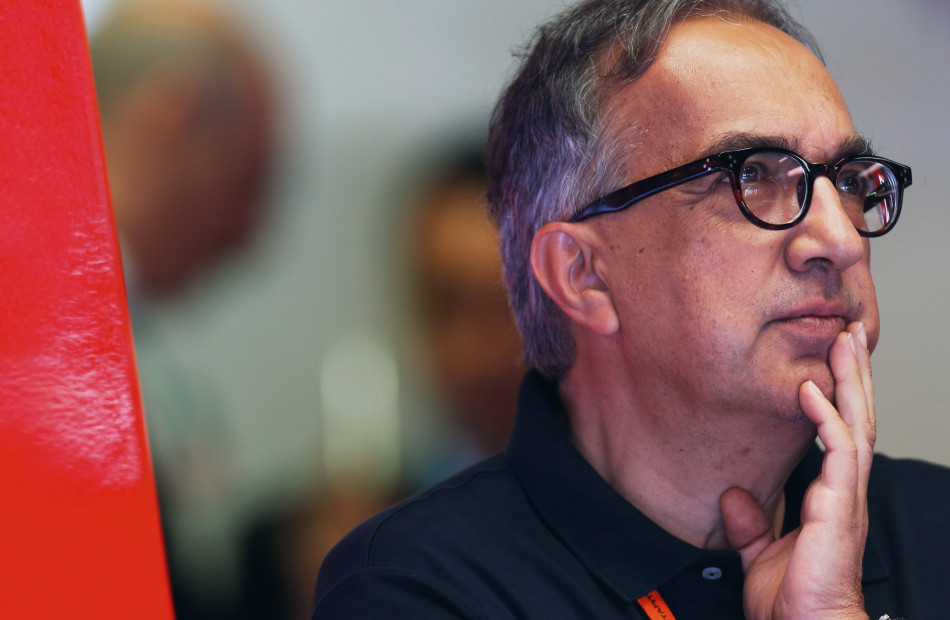From Auto #18: Sergio Marchionne
The Fiat Chrysler Automobiles and Ferrari CEO talks to AUTO about reacting to the emergence of autonomous driving, Ferrari’s road and racing future and why he believes the Alfa Romeo brand needs to be in Formula One.

Click here to read the full Auto #18 magazine.
Fiat Chrysler Automobiles showed a new semi-autonomous vehicle, the Portal, at CES in Las Vegas and billed it as a vehicle “created by millennials for millennials”. What does this kind of car say about FCA’s future direction?
The key feature of the Portal concept is its flexibility. The vehicle is engineered to be upgradeable as progresses in technology enable higher levels of autonomy. And, with its unique modular design, this vehicle can grow with millennials through each stage of their life. This is just one example of the fact that, at FCA, we are well aware of the disruptive potential of innovation on our sector and we are making some key moves to stay at the forefront of the rapid technological changes that are transforming this industry. The next 10 years, maybe even just five, will fundamentally change the operating model supporting what we do. Technology companies – either operating from or connected to Silicon Valley – have taken a keen interest in cars and they will force a reshaping of the relationship between customers and traditional carmakers. I don’t think it’s our role to replicate Silicon Valley. And so we are working hard in various areas. We continue to develop relationships with a variety of players, the so-called tech ‘intruders’, the new entrants, and we continue to evaluate these technologies as being the most appropriate for our development.
Last year FCA launched a collaboration with Google on autonomous driving using the Chrysler Pacifica Hybrid minivan. How important is that partnership?
It was and is a key relationship. It is, for sure, the first of its kind, the very first time that Google has worked directly with an automaker to integrate its self-driving system, including sensors and software, into a passenger vehicle. This project has allowed us to see first-hand how Google intends to deploy autonomous technology. It has also tested our ability to collaborate openly with a technology provider, and it has accelerated our learning process in fully automated driving. This experience has been good enough to encourage us to go a step further and extend our collaboration to the Google-provided Android operating system in our vehicles. All these moves are unavoidable. The autonomous driving world that Google and others are advocating will become a reality in some fashion by 2020. The Google platform may not be the only solution, but it’s certainly one solution. There is an intention to continue to develop this relationship and find out how far we can go. It’s a question of understanding how the technology plays in our world, and it’s crucial that we continue to push the boundaries on this.
What’s your view on the future of connectivity, within vehicles, from vehicles to each other and to infrastructure?
The tech intruders are poised to play a disruptive role in the industry. This is their real value: they are going to revolutionise the environment that drivers and passengers experience inside the vehicle. We are just at the beginning of this revolution.
I’m convinced of a couple of things. The first is that at least some sort of Level Four autonomy – where, under certain traffic or environmental conditions, all safety-critical functions are performed by the vehicle and the driver is expected to be available for occasional control – is going to become commonplace, in the very near term. In certain versions of our cars, for example, we are going to be seeing significant escalation toward Level Four autonomy between now and 2020. And secondly, that proper execution of this strategy will require cars to provide data to the ‘cloud’. I am also convinced that most automakers are ill-suited to engineer ‘the solution’. There are technology companies and an incredibly prolific Tier 1 supplier base keenly working on and willing to provide solutions. We cannot delude ourselves by believing we can replace these new technology entrants. Rather we need to be responsive, even welcoming them, and benefit from their expertise.
And your view on driverless vehicles? Apart from the Google partnership where do your priorities lie in this regard?
There are two different approaches to the development challenge. The first, which we could call ‘evolutionary’, consists of a progressive evolution through the five levels of autonomy, one step at a time. The first two levels, which involve use of single or multiple assistive functions, are already widely available in our current range. Our Maserati brand will introduce a hands-on-wheel highway assist program this year, which represents Level 3 autonomy, with the driver expected to respond to a request to intervene. Currently, we are also working on Level 4 capability and we are targeting the launch of our first highly-automated vehicle, enabling autonomous highway driving with limited driver supervision, in 2019. Jumping straight to the last level, to a fully automated system, is what we would describe as a ‘revolutionary’ approach. I believe the right approach is a mix between the two. This is the approach we are taking at FCA. On one side, we are developing our own evolutionary technologies. On the other, we are working on the revolutionary project with Google.
How important to you is the Alfa Romeo brand, in North America and worldwide?
It is vital. The commitment we made with Alfa Romeo is one of the priorities in our five-year plan. It’s no secret that Alfa is one of the projects I’ve been most involved in, operationally and emotionally. It is one of the most important of my career. Not just because of the unequalled value of the brand or the business opportunity it represents. It’s something more. Giving a voice to the real Alfa Romeo, restoring it to a position worthy of the legend, was a moral imperative. In recent years, we have acted on that imperative by providing the brand with the best resources, including talent and our best technological know-how. What we have created, with the Giulia and more recently with the Stelvio, are two models that capture the original spirit of Alfa Romeo. The instantly recognisable thoroughbred character of Alfa is something that few other brands can claim or even aspire to. Today the brand is ready to retake its rightful position as one of the world’s leading premium car brands.
Ferrari recently launched the LaFerrari Aperta to celebrate the company’s 70th anniversary. How special is that model and what does it say about the company in the second decade of the 21st century?
This a very special model because it’s the roadster version of another special car, the LaFerrari. It is even more exclusive than the original, however, as only 209 will be built. The Aperta is the culmination of 70 years of work: design, performance, an innovative hybrid solution and, as I said, exclusivity.
You’ve spoken about a desire to see all Ferraris being hybrid vehicles in the future. Is that an important target for you, in terms of the company’s sustainability and market share?
Hybridisation is crucial to Ferrari. There is no denying that regulations put us under pressure, but we could reach those targets in other ways. The challenge is to benefit from hybridisation not just in terms of emissions reduction, but also performance. We have already developed a hybrid supercar, La Ferrari, and on future Ferrari models we will leverage new technologies as well as electrification. However, the approach is totally different from mass-market brands. Ferrari is all about the emotion of driving. As always, Ferrari embraces the challenge of continuous innovation. Take the turbo technology on our 8-cylinder models, : our approach achieved improvements in performance while at the same time lowering emissions. And we did it our way, by cancelling turbo lag and making the turbo sound like a real Ferrari. It took time and investment, but we did it.
Ferrari’s 2016 figures revealed strong growth with over 8,000 cars produced. What’s behind that and where will growth come from in the future?
We achieved solid results, while maintaining our exclusivity. We increased sales through new models. We also took advantage of new opportunities and increased customer involvement. As for the future, let me be very clear. We intend to do what Enzo Ferrari always said we should: sell one car less than the market demands. If demand stays as it is, we will maintain current production levels. But, if demand increases, we would be foolish to hand potential Ferraristi over to our competitors.
Regarding motor sport, how confident do you feel ahead of the 2017 Formula One season?
The only real proof of where we stand is on the racetrack, so we need to wait and see how we measure up against the other teams. What I can tell you is that we have made radical changes to the organisation and culture of the team. The communication flow is now better and the group is more integrated. We made some personnel changes and continued to invest. We have the resolve and, I’m sure, the right group of people including a couple of very talented drivers. But, despite the intense work we have done to continue to strengthen the resources and quality of the team, one thing I have learned not to do is make any grand predictions!
You’ve also hinted at a Formula E entry. How likely is that?
It’s difficult to say. But I have two things in mind. The first is that we need to be involved in Formula E because electrification via hybridisation is going to be part of our future. The second is to see Alfa Romeo back racing in Formula One again someday, because I believe very strongly it’s a place the brand should be. At this stage, I don’t know how likely it is that either of those two things will happen. But the fact that we are talking about them is a good sign in itself.
Formula One is now under new ownership. How will that change things for you?
First of all, we need to thank Bernie. He did an incredible job for all those years and we need to pay tribute to him for making Formula One one of the most popular sports in the world. The new owners have already said they want to have more digital activities and push the entertainment side to attract a new audience. That can only make us happy, and we will continue to work with them and FIA toward our common interest of making the sport a great success.

 Facebook
Facebook Twitter
Twitter






